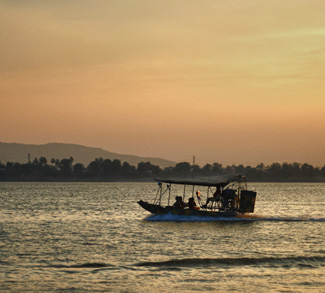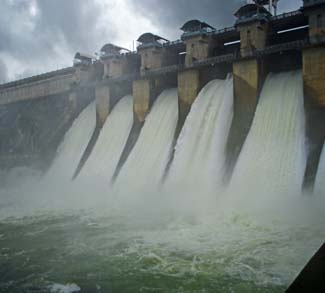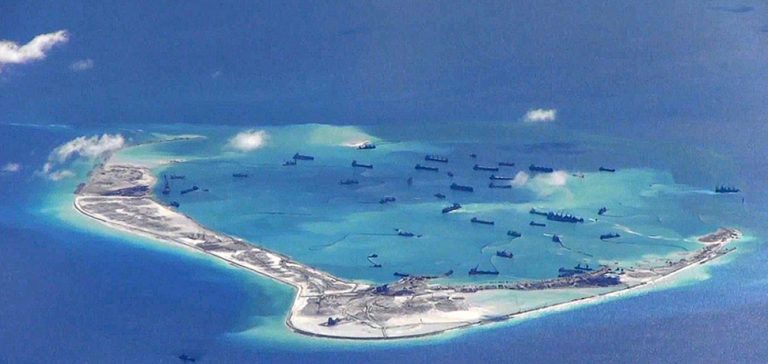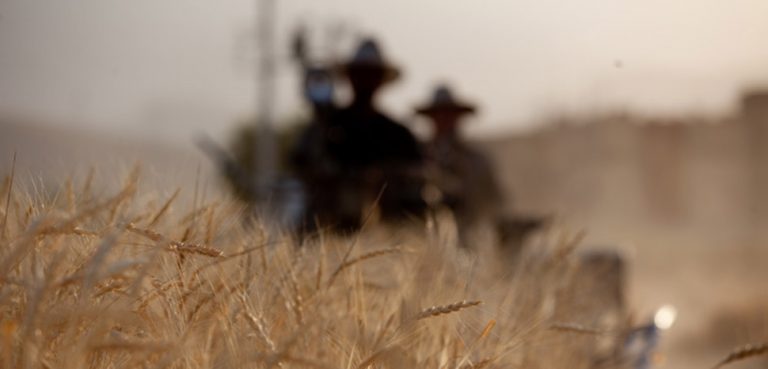Summary
The iconic Mekong River stretches 2,700 miles from China’s Tibetan Plateau to Vietnam’s Mekong Delta. Along the way it snakes through Myanmar, Thailand, Laos, and Cambodia, and for many of these countries the river is an economic lifeline, irrigating crops, replenishing fish stocks, and providing an abundance of fresh drinking water, local trade channels, and hydroelectricity generation.
Though the Mekong River has a formative role in the national mythos of many of these Southeast Asian countries, helping to nurture and sustain civilization there for millennia, recent history has been underscoring the finite nature of its bounty. More specifically, these past few years have seen reduced flow in downstream states and a creeping salinization moving inward from the Mekong Delta. What’s to blame? It depends who you ask, but many point to some combination of climate change and the growing number of dams in upstream countries like China, Thailand, Laos, and elsewhere.
A drying river increases the risk of various negative economic and humanitarian effects throughout the Mekong Delta: reduced agricultural output, drinking water shortages, and electricity shortfalls to name a few. It also represents a water conflict with wider geopolitical implications since China can influence the hydrological fate of downstream states by adjusting the fill levels of dams in its own territory. Thus, Mekong water politics could enter into the diplomatic equation on other, unrelated regional issues such as China’s aggressive posturing in the South China Sea dispute.
Background
2016: A year of unprecedented drought in the Mekong Delta. Mekong water politics are in sharper focus because of the unprecedented drought the area experienced in 2016. The drought hit Vietnam – the last downstream country and home of the Mekong Delta – the hardest. Vietnam experienced saltwater intrusion up to 40 miles inward from the delta, claiming some 400,000 hectares of land that was being used for rice cultivation. Around 166,000 hectares of it has been rendered infertile. Together, this accounts for around 10% of Vietnam’s rice cultivation (Vietnam is the world’s fifth largest rice exporter). Early estimates from the Vietnamese Ministry of Agriculture put the losses in the industry at over $220 million over the first part of 2016 alone. The ministry estimates that some $4 billion of investment will be needed to combat drought and salinization in the Delta region.
Vietnam’s fishing industry has also been impacted by declining river flow, salinization, and years of overfishing. In just one specific example cited by the WWF, stocks of the Mekong Giant Catfish have declined by 90% over the past two decades.
Over the course of the drought in early 2016, some two million people in Vietnam were living without adequate drinking water.
Vietnam isn’t the only Mekong Delta state that suffered during the drought. Thailand’s Ubol Ratana reservoir, which is fed by a Mekong tributary, ran dry in April of 2016, harming the crops that rely on it for irrigation and destroying local fish stocks. Around the same time, Cambodia’s Tonle Sap lake and river were running at a 50-year lows, and some 93,000 impoverished rural families were struggling to feed themselves.
Toward the end of 2016, monsoon rains came and brought sweet relief to farmers and fishers in Mekong countries. But the lesson of 2016 is a worrying one: droughts like this will increasingly be the norm, not the exception.
Dams, dams, and more dams. The drought of 2016 was caused in part by an abnormally harsh dry season thanks to El Nino (many suspect that climate change is behind the intensity of last year’s El Nino event). But it’s not only a case of a shifting climate changing economic fortunes along the Mekong Delta – there’s also the matter of booming dam construction in many upstream countries.




